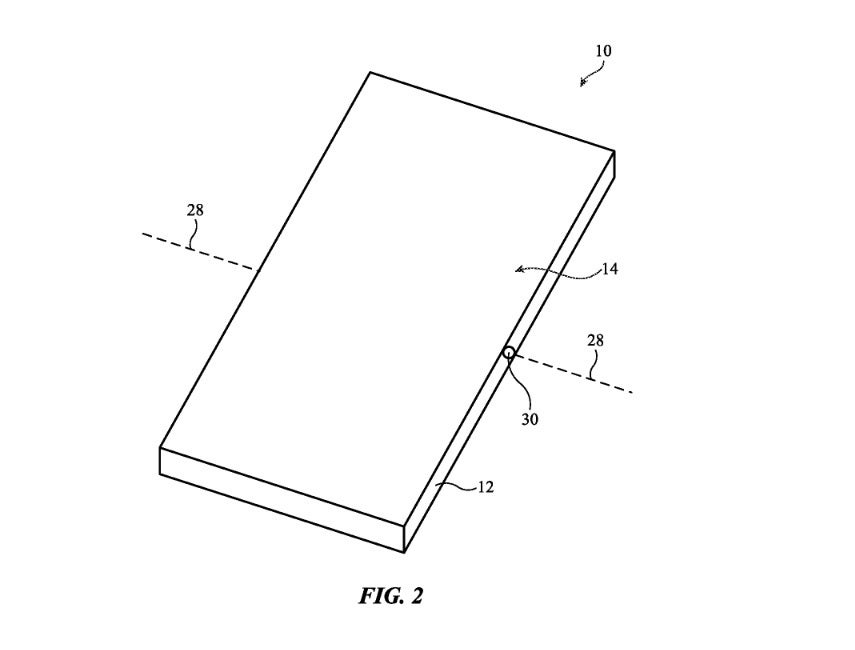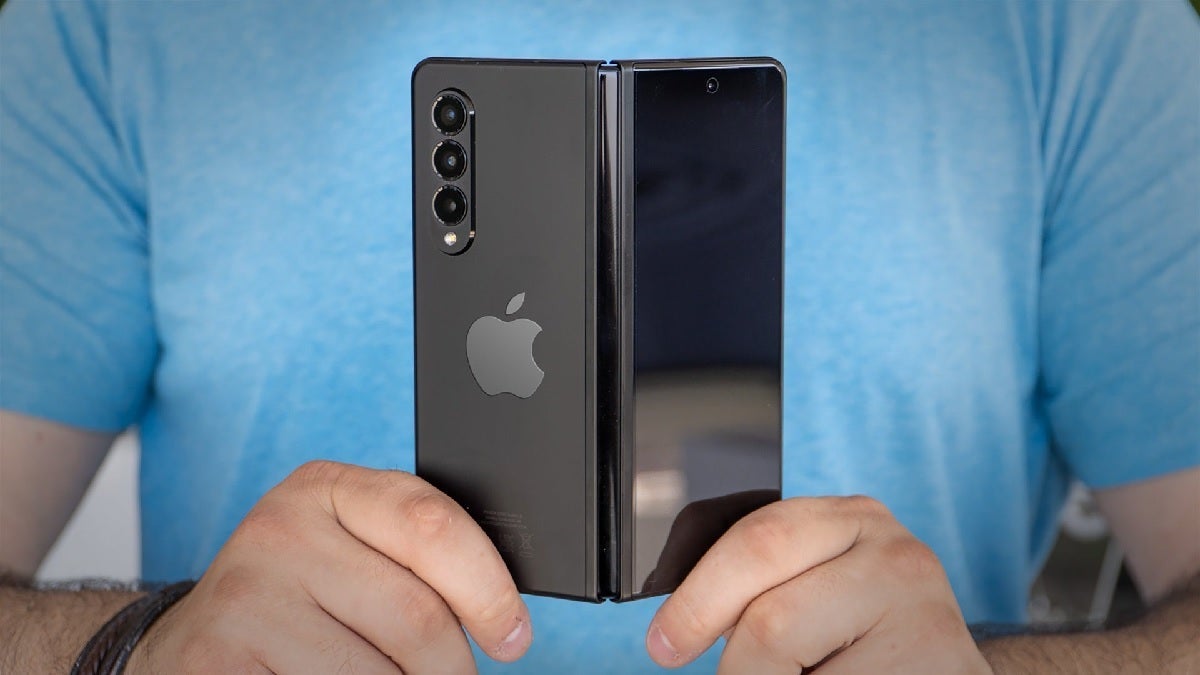It seems that the answer to making a durable foldable starts by making the glass thinner in some areas and thicker in others. The glass thins out in areas where it might be expected to bend around the bend axis. To protect the display from drops and falls, corner portions of the display and other edge portions could be thicker. Apple feels that protecting the corner of the display in a fall or drop is very important.
“A foldable display may have a display cover layer and a flexible display panel. The foldable display may bend around a bend axis…The display cover layer may be formed from a layer of glass. A recess may be formed in the layer of glass that extends along the bend axis. The recess may form a flexible locally thinned portion in the layer of glass that allows the glass layer to bend around the bend axis. To ensure that the display cover layer exhibits satisfactory impact resistance during drop events corner portions of the display cover layer and other edge portions of the display cover layer may be provided with greater thickness relative to other portions of the display cover layer outside of the locally thinned portion.”-Apple
A roadmap from Korean website SamsungPOP that was tweeted last May by “X” leaker @Revegnus1
showed a foldable iPhone with a release in 2026. The book-style foldable would feature a 6-inch external display and an 8-inch internal screen. That would be followed the next year with the release of a 20-inch foldable iPad. This contradicts the expectations of top Apple analyst Ming-Chi Kuo who toils for TF International.
Illustration from Apple’s new patent. | Image credit-USPTO
Kuo, who has an outstanding reputation when it comes to Apple (although we should point out that it is not a perfect record) said back in May that
a 20.3-inch or an 18.8-inch foldable MacBook will arrive in 2026. Kuo says to expect the device to be powered by a powerful M5 chip that has yet to be announced. When folded, the 20.3-inch foldable MacBook would convert into a 14-15-inch laptop. In the same state, the 18.3-inch foldable MacBook would turn into a 13-14-inch laptop.
Another illustration from Apple’s new patent. | Image credit-USPTO
The analyst
expects more than a million units of the foldable Mac to ship in 2026. He expects Apple to pay $600-$650 for each display with each hinge costing Apple $200-$250. Kuo says that if yields improve during mass production of these parts, the price Apple pays for them could go down. LG Display will be Apple’s exclusive development partner for the display while Amphenol will have the same title for the hinge. He sees assembly of the foldable MacBook beginning in the first half of 2026.
Source Link Website



